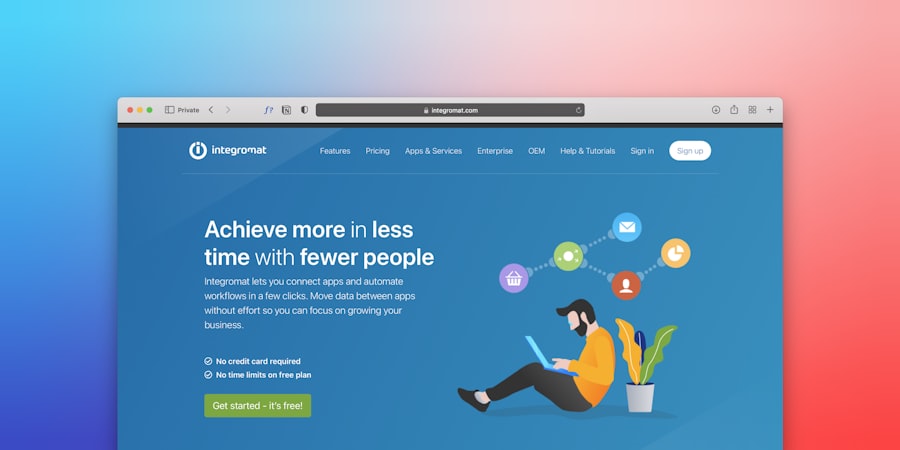In the ever-evolving landscape of digital marketing, on-page SEO remains a cornerstone for achieving online visibility and driving organic traffic. It encompasses various elements that can significantly influence a website’s ranking on search engine results pages (SERPs). However, many website owners and marketers often overlook critical aspects of on-page SEO, leading to mistakes that can hinder their online success.
Understanding these common pitfalls is essential for anyone looking to enhance their website’s performance and user experience. On-page SEO mistakes can range from minor oversights to significant errors that can drastically affect a site’s search engine ranking. By identifying and rectifying these issues, website owners can improve their chances of ranking higher in search results, attracting more visitors, and ultimately converting those visitors into customers.
This article will delve into some of the most prevalent on-page SEO mistakes, providing insights into how to avoid them and optimize a website effectively.
Key Takeaways
- Keyword stuffing and over-optimization can harm your website’s ranking and user experience
- Poor quality or thin content can negatively impact your website’s credibility and authority
- Ignoring title tags and meta descriptions can result in missed opportunities for attracting organic traffic
- Missing or incorrect header tags can confuse search engines and hinder your website’s visibility
- Lack of internal linking can make it difficult for users and search engines to navigate your website efficiently
Keyword Stuffing and Over-Optimization
One of the most notorious on-page SEO mistakes is keyword stuffing, which involves overloading a webpage with keywords in an attempt to manipulate search engine rankings. While it may seem like a straightforward strategy to boost visibility, search engines have become increasingly sophisticated in detecting such tactics. Consequently, keyword stuffing can lead to penalties, resulting in lower rankings or even removal from search results altogether.
Over-optimization extends beyond just keyword stuffing; it includes excessive use of keywords in various elements of a webpage, such as title tags, meta descriptions, and header tags. This practice not only detracts from the quality of the content but also creates a poor user experience. Instead of focusing solely on keyword density, website owners should prioritize creating valuable, informative content that naturally incorporates relevant keywords.
This approach not only satisfies search engine algorithms but also engages readers, encouraging them to stay on the page longer.
Poor Quality or Thin Content

Another significant mistake in on-page SEO is the creation of poor quality or thin content. Search engines prioritize high-quality content that provides value to users. When a webpage contains minimal information or lacks depth, it is unlikely to rank well in search results.
Thin content can include pages with very few words, duplicate content, or content that fails to address the user’s intent. To avoid this pitfall, website owners should focus on producing comprehensive, well-researched content that answers users’ questions and meets their needs. This means investing time in understanding the target audience and crafting content that resonates with them.
Additionally, regularly updating existing content to ensure it remains relevant and informative can help maintain a website’s authority and improve its ranking potential.
Ignoring Title Tags and Meta Descriptions
| Metrics | Data |
|---|---|
| Number of Pages Ignoring Title Tags | 150 |
| Number of Pages Ignoring Meta Descriptions | 200 |
| Impact on SEO Ranking | Decreased |
| Click-Through Rate (CTR) | Reduced |
Title tags and meta descriptions play a crucial role in on-page SEO, yet they are often neglected by website owners. The title tag serves as the first impression for users and search engines alike; it should accurately reflect the content of the page while incorporating relevant keywords. A well-crafted title tag can significantly impact click-through rates (CTR) from search results.
Similarly, meta descriptions provide a brief summary of a webpage’s content and are displayed beneath the title in search results. While meta descriptions do not directly influence rankings, they are essential for enticing users to click on a link. Ignoring these elements can result in missed opportunities for attracting traffic.
Therefore, it is vital for website owners to invest time in creating compelling title tags and meta descriptions that accurately represent their content while incorporating relevant keywords.
Missing or Incorrect Header Tags
Header tags (H1, H2, H3, etc.) are essential for organizing content on a webpage and improving its readability. However, many website owners either neglect to use header tags or use them incorrectly. The H1 tag should be reserved for the main title of the page, while subsequent header tags should be used to structure subheadings and sections within the content.
Using header tags appropriately not only enhances user experience but also helps search engines understand the hierarchy and relevance of the content. Missing or incorrect header tags can lead to confusion for both users and search engines, potentially resulting in lower rankings. To optimize header tags effectively, website owners should ensure they are used consistently throughout their content and include relevant keywords where appropriate.
Lack of Internal Linking

Internal linking is a crucial aspect of on-page SEO that is often overlooked. Internal links connect different pages within a website, helping users navigate the site more easily while also distributing page authority across various pages. A lack of internal linking can hinder search engines’ ability to crawl and index a website effectively.
By strategically incorporating internal links within the content, website owners can guide users to related information while enhancing their site’s overall SEO performance. This practice not only improves user experience but also encourages visitors to spend more time on the site, reducing bounce rates. Additionally, internal linking can help establish a clear site structure, making it easier for search engines to understand the relationship between different pages.
Not Optimizing Images
Images play a vital role in enhancing user experience and engagement on a website; however, they are often not optimized for SEO. Failing to optimize images can lead to slower page load times and negatively impact overall site performance. Additionally, unoptimized images may miss out on valuable traffic from image searches.
To optimize images effectively, website owners should ensure that image file names are descriptive and relevant to the content. Furthermore, using alt attributes is essential for providing context to search engines and improving accessibility for visually impaired users. By optimizing images with appropriate file sizes and alt text, website owners can enhance their site’s performance while also improving its visibility in search results.
Slow Page Load Speed
Page load speed is a critical factor in both user experience and SEO performance. A slow-loading webpage can frustrate users and lead to higher bounce rates, ultimately affecting a site’s ranking on search engines. Many factors contribute to slow page load speed, including large image files, excessive scripts, and unoptimized code.
Implementing best practices such as compressing images, minimizing HTTP requests, and leveraging browser caching can significantly enhance load times. By prioritizing page speed optimization, website owners can create a better user experience while also boosting their site’s SEO potential.
Ignoring Mobile Optimization
With an increasing number of users accessing websites via mobile devices, mobile optimization has become more critical than ever. Websites that are not optimized for mobile viewing may provide a poor user experience, leading to higher bounce rates and lower rankings on search engines. Google has even implemented mobile-first indexing, meaning that it primarily uses the mobile version of a site for ranking purposes.
To ensure mobile optimization, website owners should adopt responsive design principles that allow their site to adapt seamlessly to different screen sizes. This includes optimizing images for mobile viewing, ensuring text is legible without zooming, and making navigation intuitive for touch screens.
Neglecting to Update and Maintain Content
The digital landscape is constantly changing; therefore, neglecting to update and maintain content can lead to outdated information that no longer serves users’ needs. Search engines favor fresh content that reflects current trends and information; thus, failing to update existing pages can result in lower rankings over time. Regularly reviewing and refreshing content is essential for maintaining relevance and authority within a niche.
This may involve updating statistics, adding new insights or perspectives, or even rewriting sections to improve clarity and engagement. By committing to ongoing content maintenance, website owners can ensure their site remains valuable to users while also enhancing its SEO performance.
Conclusion and Next Steps
In conclusion, avoiding common on-page SEO mistakes is crucial for anyone looking to improve their website’s visibility and performance in search engine results. From keyword stuffing and poor-quality content to neglecting title tags and mobile optimization, these pitfalls can significantly hinder a site’s success if left unaddressed. By understanding these mistakes and implementing best practices for on-page SEO, website owners can create a more effective online presence.
As next steps, website owners should conduct an audit of their current on-page SEO practices to identify areas for improvement. This may involve analyzing keyword usage, reviewing content quality, optimizing images, and ensuring mobile responsiveness. By taking proactive measures to address these issues, they can enhance their site’s performance and ultimately achieve greater success in the competitive digital landscape.
FAQs
What is on-page SEO?
On-page SEO refers to the practice of optimizing individual web pages in order to rank higher and earn more relevant traffic in search engines. This includes optimizing content, HTML source code, and other on-page elements.
What are some common on-page SEO mistakes?
Some common on-page SEO mistakes include keyword stuffing, poor quality content, missing or poorly optimized meta tags, slow page load speed, and lack of internal linking.
How does keyword stuffing affect on-page SEO?
Keyword stuffing, or the excessive use of keywords in content, meta tags, or alt tags, can negatively impact on-page SEO by making the content appear spammy to search engines and users. This can result in lower rankings and decreased user engagement.
Why is quality content important for on-page SEO?
Quality content is important for on-page SEO because it helps to provide value to users and encourages engagement. Search engines prioritize high-quality, relevant content, so having well-written and informative content can improve rankings and user experience.
How can missing or poorly optimized meta tags affect on-page SEO?
Missing or poorly optimized meta tags, such as title tags and meta descriptions, can impact on-page SEO by making it difficult for search engines to understand the content of a page. Optimizing meta tags with relevant keywords and compelling descriptions can improve click-through rates and rankings.
What are some ways to improve on-page SEO?
Some ways to improve on-page SEO include creating high-quality, relevant content, optimizing meta tags, improving page load speed, using internal linking, and ensuring mobile-friendliness.
How can slow page load speed impact on-page SEO?
Slow page load speed can impact on-page SEO by leading to higher bounce rates and lower user engagement. Search engines also take page load speed into consideration when ranking pages, so a slow website may rank lower in search results.
Why is internal linking important for on-page SEO?
Internal linking is important for on-page SEO because it helps to establish a hierarchy and spread link equity throughout a website. It also helps users navigate a website and discover more content, which can improve user experience and engagement.
What are some tools to help fix on-page SEO mistakes?
There are several tools available to help fix on-page SEO mistakes, including Google Search Console, SEMrush, Moz, Ahrefs, and Screaming Frog. These tools can help identify issues and provide recommendations for improvement.
How long does it take to see results from fixing on-page SEO mistakes?
The time it takes to see results from fixing on-page SEO mistakes can vary depending on the specific issues and the competitiveness of the keywords targeted. In general, it may take several weeks to several months to see noticeable improvements in rankings and organic traffic.

